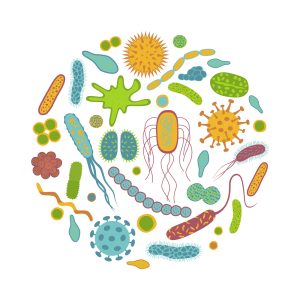 Do you understand the true Impact of metabolism on Health. You’ve probably heard a lot about metabolism, but do you have a full understanding of what it means, or why improving your metabolism is so important?
Do you understand the true Impact of metabolism on Health. You’ve probably heard a lot about metabolism, but do you have a full understanding of what it means, or why improving your metabolism is so important?
Most people’s understanding of metabolism is related to weight – a slow metabolism may lead to weight gain, or increasing one’s metabolism can lead to weight loss.
That is just a small part of how metabolism affects the body and impacts health. This article aims to give a fuller understanding of metabolism to help you understand how your metabolism could be affecting your health.
First, let’s define the terms so you can understand this health issue.
Metabolism is a generic word for EVERY chemical process in your body from energy production to cellular reproduction and fighting off disease.
Metabolism is the process of cells creating energy from food (from nutrition.) Well-functioning cells create a well-functioning and healthy body.
Thus, improving metabolism at the cellular level is the health goal.
What are mitochondria?
Mitochondria (singular: mitochondrion) are organelles (structures that perform special functions within the cell) that produce the energy used by the cell. For this reason, the mitochondrion is sometimes referred to as “the powerhouse of the cell”. They are the batteries of the cells and are a very important part of good health.
Mitochondrial Dysfunction means the body has fewer mitochondria, and the ones it does have are smaller and inefficient (not working as well as they should.) Damage to the mitochondria causes cells to die because they can no longer produce enough energy.
Because mitochondrial damage disrupts normal metabolism, it results in metabolic dysfunction.
Metabolic Dysfunction occurs when metabolism goes awry, and abnormal chemical reactions happen and disrupt the body’s metabolism. This means less cellular energy is produced and organ dysfunction can result. Impaired metabolism can result in nutrient deficiencies and toxic overload.
By the time you experience non-optimum health issues, it’s safe to say you’ve probably had metabolic dysfunction for quite a while.
If you have high blood pressure, high blood glucose, insulin resistance, high cholesterol, and excess weight around the waist you have metabolic dysfunction that is negatively affecting the way your body functions.
This also means you have an increased risk of a more serious health condition. It is very important that the underlying cause of non-optimum health conditions – metabolic dysfunction – is addressed.
The syndrome caused by metabolic dysfunction is Metabolic Syndrome.
What Does Improving your Metabolism Mean?
Improving your metabolism means improving the health of your cells.
Healthier cells can result in a range of health improvements, such as better digestion and normal bowel movements.
Healthier cells can lead to a stronger immune health, lower levels of inflammation and less stress.
In fact, the potential health improvements of having healthier cells are many.
How Can I Improve my Cellular Health and Metabolism?
The most powerful way to improve your cellular health and metabolism is through nutrition. Giving your body the nutrition it needs to thrive is the answer.
Find out how to eat for better cellular health and metabolism in the Eat Well, Feel Great! Nutrition Course.
Click here to find more about the Eat Well, Feel Great! Nutrition


 Camel milk contains high proportions of anti-bacterial and anti-viral substances, antioxidants and immune system boosters.
Camel milk contains high proportions of anti-bacterial and anti-viral substances, antioxidants and immune system boosters. There are a lot of words to understand when it comes to metabolism and your health and what you should do to build a healthy metabolism. Here are a few more terms.
There are a lot of words to understand when it comes to metabolism and your health and what you should do to build a healthy metabolism. Here are a few more terms.